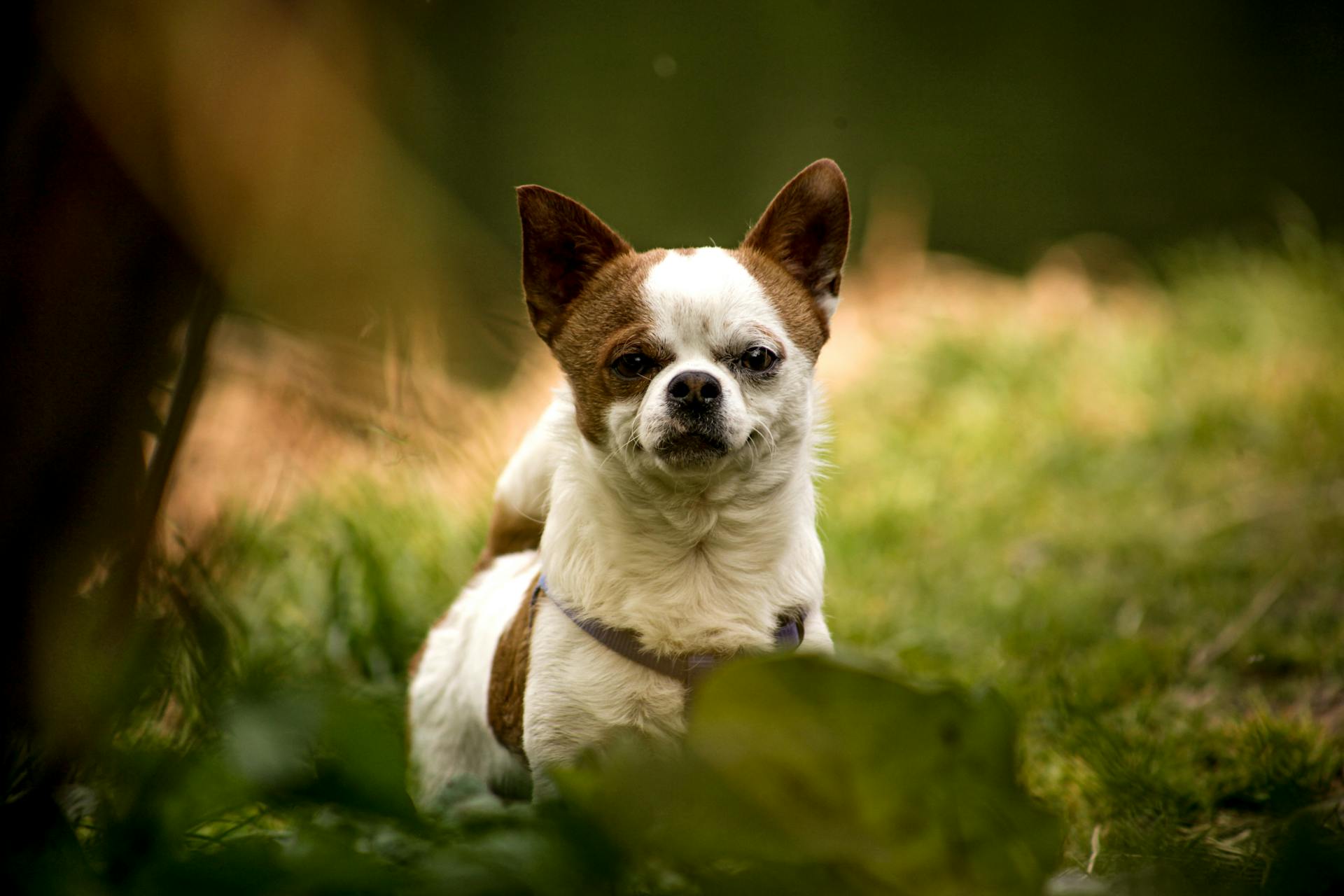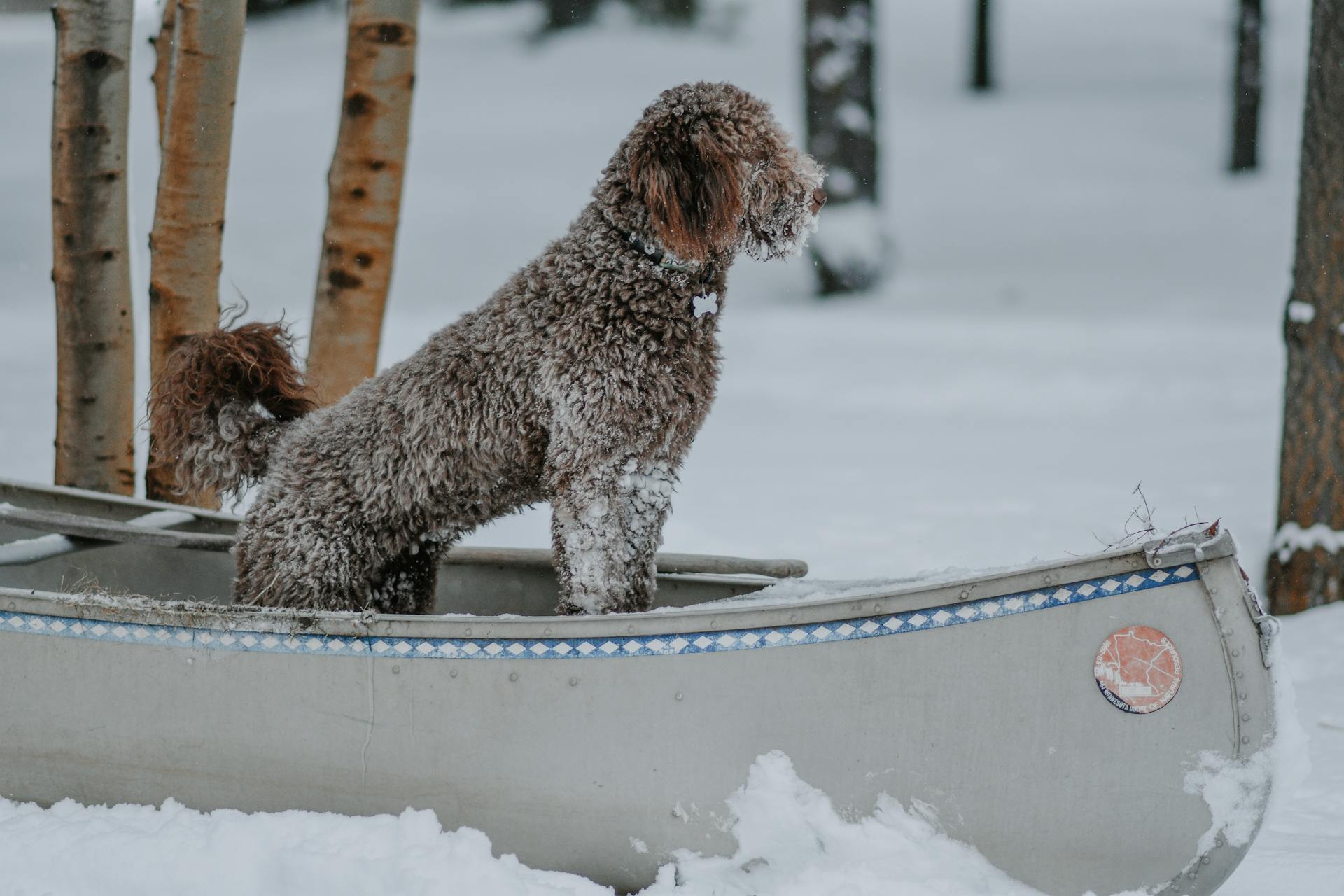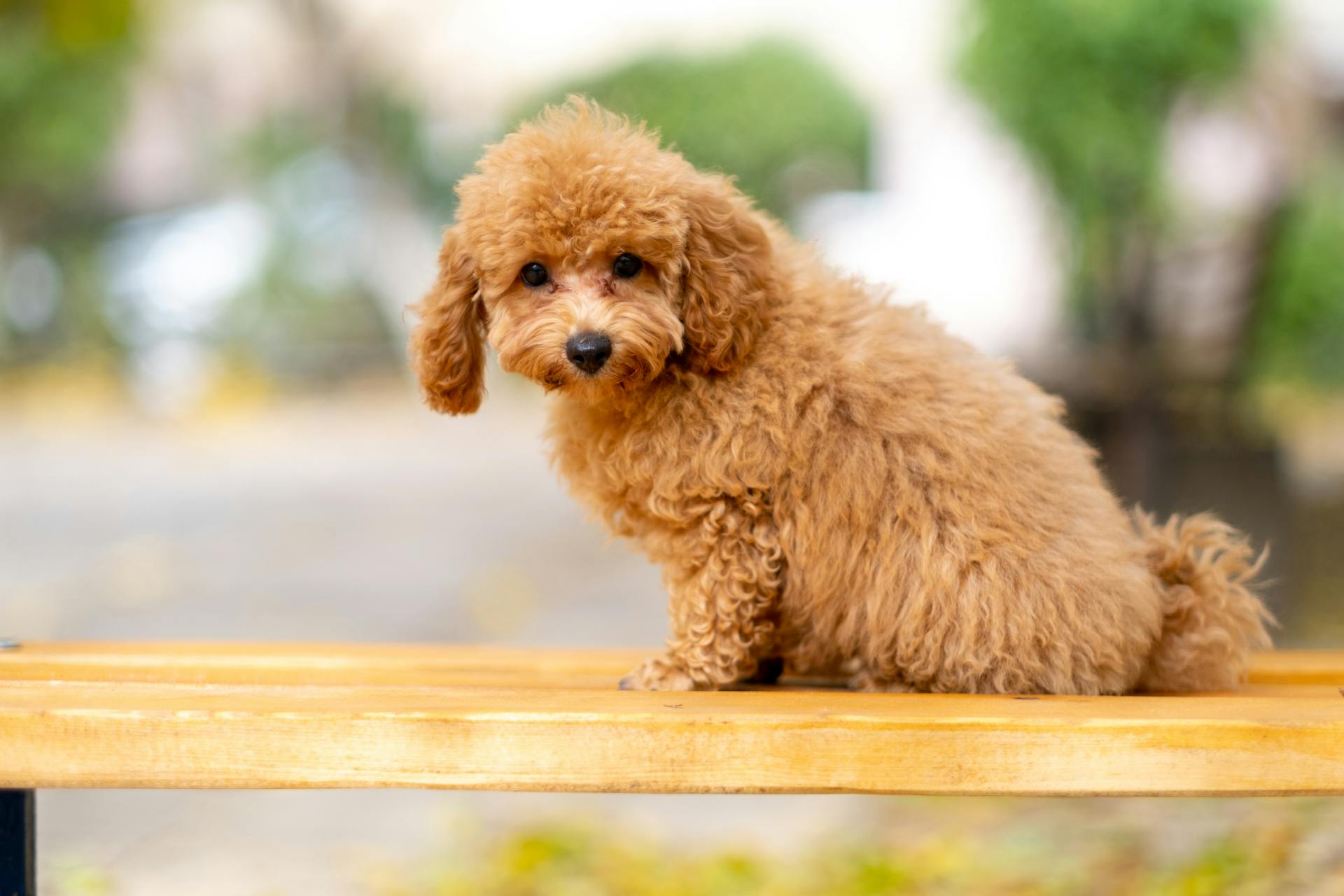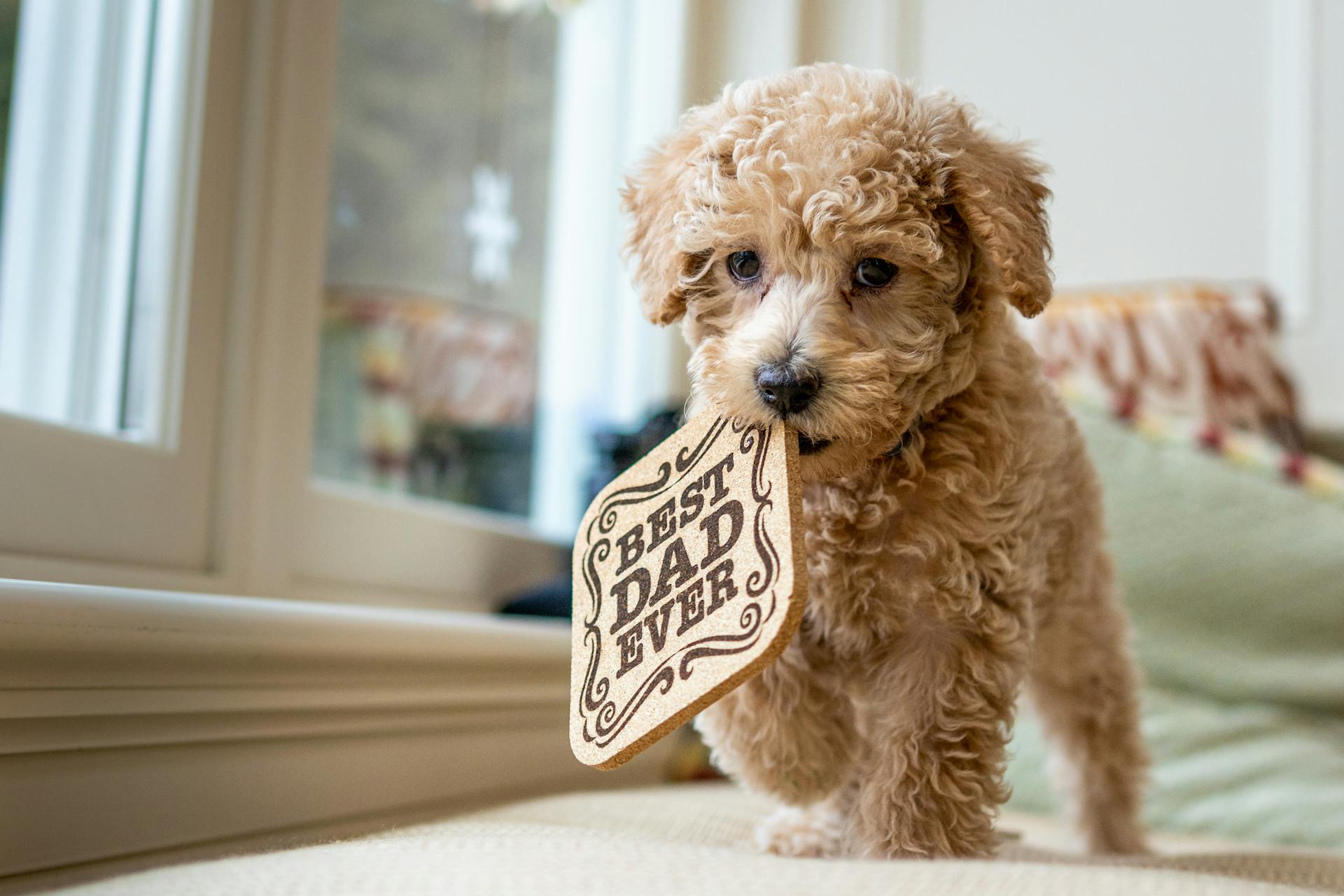
Schnoodles are a cross between a Poodle and a Schnauzer, but their size can vary greatly depending on the size of the parent breeds. They can range from Toy to Standard in size.
The average weight of a Toy Schnoodle is between 8-18 pounds, while a Standard Schnoodle can weigh up to 60 pounds or more. Their height can also vary, with Toy Schnoodles typically standing between 10-14 inches tall and Standard Schnoodles reaching up to 20 inches or more.
To care for a Schnoodle, it's essential to provide regular grooming. This includes daily brushing to prevent matting and tangling of their fur, as well as regular trimming to maintain a neat and tidy appearance.
Schnoodles are highly intelligent and active, requiring regular exercise to stay happy and healthy. A daily walk or playtime should be sufficient, but they may also enjoy more strenuous activities like running or swimming.
Consider reading: Standard Poodle Height Chart
Physical Characteristics
Schnoodles come in a wide range of sizes, depending on the size of their parents. The size of a Schnoodle can be anywhere from 10 to 28 inches in height.
There are no breed standards for the Schnoodle, so predicting adult size isn't an exact science. This means that even if you know the size of the parents, you can't guarantee the size of the offspring.
The variation in size is part of the joy of owning a mixed breed, and it's not uncommon for Schnoodles to be 20 pounds or less. However, some Schnoodles can grow up to 110 pounds or more.
Here are some estimated sizes for different types of Schnoodles:
- Toy Schnoodles: 10-12 inches in height, 6-10 pounds
- Miniature Schnoodles: 12-15 inches in height, 13-20 pounds
- Standard Schnoodles: 15-26 inches in height, 20-75 pounds
- Giant Schnoodles: 20-28 inches in height, 50-110 pounds
On average, a standard Schnoodle stands 26 inches tall and weighs around 60-70 pounds. However, this can vary depending on the specific lineage of the parents.
Health & Expectancy
Schnoodles are considered healthy dogs with an average lifespan of 12 to 16 years.
Their lifespan is a testament to the benefits of hybrid vigor, which makes them generally healthier than their purebred parents.
However, like any breed, Schnoodles are prone to certain health problems and hereditary diseases.
Check this out: Life Expectancy of Schnoodle
These include hip and elbow dysplasia, patellar luxation, Addison's disease, progressive retinal atrophy, gastric torsion (also known as bloat), allergies and sensitivities, and ear infections.
Responsible breeders test their parent dogs for genetic defects and health problems, but it's up to the owner to provide a healthy and balanced diet, plenty of exercise, and a safe living environment.
Here are the common health issues Schnoodles are at risk for:
- Hip and elbow dysplasia
- Patellar luxation
- Addison’s disease
- Progressive retinal atrophy
- Gastric torsion, also known as bloat
- Allergies and sensitivities
- Ear infections
Feeding and Nutrition
Your Schnoodle's daily food intake should be around 3/4 to 1 cup of high-quality dry food, depending on their size and activity level.
A Giant Schnauzer parent can result in a significantly larger dog, which means more food is needed. It's essential to check with your veterinarian for personalized feeding recommendations.
Feeding your Schnoodle twice or three times a day, rather than free feeding, can help maintain their ideal weight and overall health.
The quality of dog food you buy makes a difference, with better food going further in nourishing your dog and reducing the amount needed.
Consider incorporating human-grade food and fresh vegetables into your pup's diet to enhance their health and longevity.
Your veterinarian can advise on switching to a vegetarian diet if your Schnoodle suffers from health issues like food allergies or skin problems.
Regularly check your Schnoodle's weight by performing the eye test and hands-on test: look for a visible waist and feel their ribs without having to press hard.
If you can't see or feel their ribs, they likely need less food and more exercise.
Schnoodles can benefit from a weight management food or low-calorie meals like pumpkin or carrots if they're prone to obesity.
Over 50% of US dogs are overweight, making weight management crucial for a long and healthy life.
General Information
Schnoodles are a relatively new hybrid breed, making them a unique and exciting addition to many families.
They come in all different statures, thanks to their Poodle and Schnauzer heritage, which offers a range of sizes to choose from.
The American Canine Hybrid Club recognizes three Schnoodle sizes: the Giant Schnoodle, Standard Schnoodle, and Miniature Schnoodle.
Schnoodles are smart and loving companions, making them a great fit for families who want a loyal and affectionate pet.
As a Schnauzer-Poodle mix, Schnoodles can be a good fit for people with allergies, as both Schnauzers and Poodles can be hypoallergenic to some extent.
Full-grown Schnoodles can range from small to large, offering a variety of options for families with different living situations.
Take a look at this: Pictures of Schnoodle Puppies
Frequently Asked Questions
What is the average weight of a miniature Schnoodle?
A miniature Schnoodle typically weighs between 10-20 pounds.
Sources
Featured Images: pexels.com


